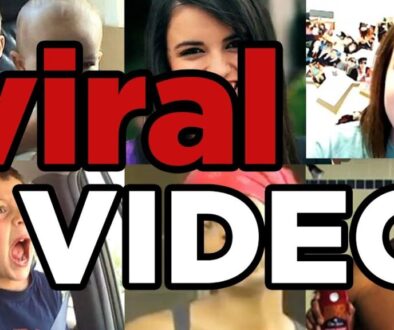How to Start a YouTube Channel: A Step-by-Step Guide for Beginners
Starting a YouTube channel is an exciting venture that can lead to new opportunities, creative expression, and even potential income. Whether you’re aiming to share your passions, teach others, or build a personal brand, YouTube offers a global platform to do just that. But with millions of channels already out there, how do you get started and stand out? Here’s a step-by-step guide to help you launch your own YouTube channel.
1. Decide on Your Niche
Before you dive into creating content, it’s essential to narrow down your niche. This will define your channel’s focus and attract a targeted audience. You could choose anything from gaming, vlogging, cooking, tech reviews, educational content, fitness, to niche hobbies. Ask yourself:
- What am I passionate about?
- What do I have knowledge of or experience in?
- What kind of content do I enjoy watching on YouTube?
The more specific and focused your niche, the easier it will be to build a dedicated community. For example, instead of a broad “fitness” channel, you might focus on “home workouts for beginners.”
2. Create Your YouTube Account
You’ll need a Google account to start your YouTube channel. If you already have one, simply log into YouTube and click on your profile icon in the top right corner. From there, select “Create a Channel” and follow the prompts.
- Channel Name: Choose a name that represents your niche and is easy to remember. It should also be unique to ensure no one else is using it.
- Profile Picture and Banner: Create a custom profile picture (typically 800 x 800 px) and channel banner (2560 x 1440 px). These are the first things people will see, so make them visually appealing and representative of your brand.
3. Set Up Your Channel Art & Branding
Once your account is ready, it’s time to make your channel visually engaging. Channel art is a key part of branding that helps you stand out. Invest some time in designing a channel banner, logo, and other assets that reflect your theme and values.
- Channel Description: Write a concise and clear channel description that tells new viewers what your content is about. Use keywords related to your niche, as this will help people find your channel.
- Social Media Links: Link your other social media profiles to drive more traffic and create a cohesive brand across platforms.
4. Plan Your Content
Now that your channel is set up, it’s time to plan your first few videos. Think about what your audience would find valuable, informative, or entertaining. Start by brainstorming ideas that align with your niche and add a personal touch to make your videos unique. Some content types to consider include:
- Tutorials & How-To’s: These are great for educational channels or anything where people want to learn something new.
- Product Reviews: Perfect for tech, beauty, or fitness channels.
- Vlogs: These can be casual and personal, offering a window into your life and thoughts.
- Challenges or Collaborations: Engaging content that can spark interest and attract attention.
Consistency is key, so aim for a regular posting schedule — whether it’s once a week, bi-weekly, or monthly. Creating a content calendar can help you stay organized.
5. Invest in Basic Equipment
While YouTube success isn’t all about high-end equipment, a few basic tools will significantly improve the quality of your videos. You don’t need to spend a fortune at first, but here are some essentials:
- Camera: A decent DSLR, mirrorless camera, or even a good smartphone can work. Ensure it records in HD or 4K for clarity.
- Microphone: Good audio is crucial. Consider a clip-on lapel mic or a shotgun mic for clearer sound.
- Lighting: Natural lighting is great, but a ring light or softbox can improve your video’s visual quality.
- Editing Software: Start with free tools like iMovie, DaVinci Resolve, or Shotcut. As you grow, you can explore advanced software like Adobe Premiere Pro or Final Cut Pro.
6. Create Your First Video
When you’re ready, film your first video. Keep it simple, especially if you’re new to editing or video production. The key is to just get started and learn along the way.
- Hook Your Audience: The first 10 seconds of your video should grab viewers’ attention. Clearly introduce the topic and what they’ll gain by watching.
- Clear Audio and Visuals: Ensure good lighting, stable shots, and clear audio. Editing is where you can add polish, but shooting quality video is the foundation.
- Engage with Your Audience: Make sure to introduce yourself and encourage viewers to like, comment, and subscribe. Building a relationship with your audience is essential for growth.
7. Edit and Optimize Your Videos
Once you’ve filmed your video, it’s time to edit. Editing allows you to refine your content, remove mistakes, and add effects or music. But editing is not just about making the video look good — it’s also about optimization.
- Title: Craft a catchy and keyword-rich title to help your video appear in search results. Avoid clickbait, as it can turn viewers off.
- Description: Write a detailed description, including relevant keywords and links to your social media or other videos.
- Tags: Add relevant tags that help YouTube categorize your video, making it more likely to show up in related searches.
- Thumbnail: Design a custom thumbnail (1280 x 720 px). This is the first impression viewers get, so make it eye-catching and relevant to the content.
8. Upload and Promote Your Videos
When everything’s ready, hit the “Publish” button! But don’t stop there — promote your video on social media, blogs, or any other platform where your target audience hangs out. Engage with your viewers by responding to comments and fostering a community.
As you upload more content, you can also analyze your YouTube Analytics to understand what works, what doesn’t, and how to improve your videos for better engagement and growth.
9. Monetize Your Channel (When Ready)
Once you’ve gained a substantial following and meet the eligibility requirements, you can apply for YouTube’s Partner Program to monetize your videos through ads. To qualify, you’ll need:
- 1,000 subscribers
- 4,000 watch hours in the past 12 months
- A linked AdSense account
Additionally, you can explore other revenue streams like sponsorships, affiliate marketing, or selling merchandise.
Final Thoughts
Starting a YouTube channel can be overwhelming, but with patience, creativity, and persistence, you can turn your passion into something meaningful. Focus on producing content that adds value to your audience, and remember that consistency is key. While growth may take time, building a loyal community and improving your skills along the way will bring long-term success.
So, grab your camera, press record, and start sharing your unique voice with the world! 🎥✨
Pro Tip: Don’t be afraid to experiment and evolve your content. YouTube success doesn’t happen overnight, but with determination and consistency, your channel can grow into something amazing!



